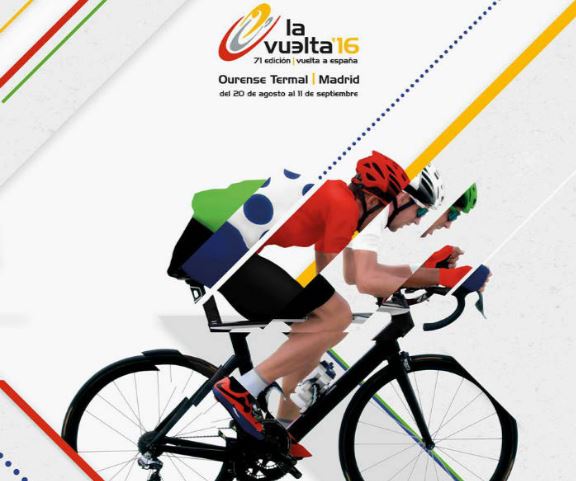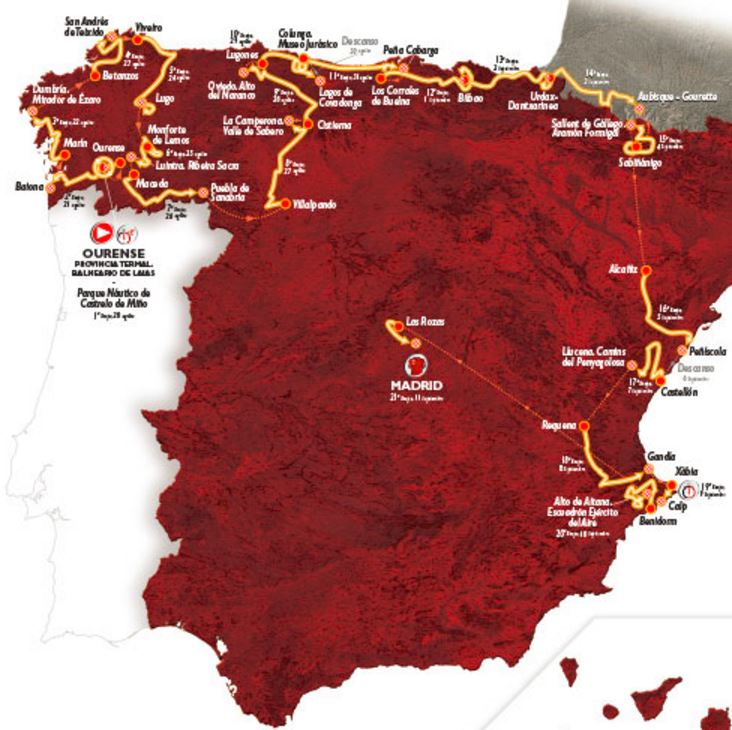- Details
- Published on Sunday, 14 August 2016 15:13
Vuelta a España Preview
A look at the 2016 Vuelta
After a Tour de France that never really got going, I think it's fair to say that we are all looking forward to some fireworks in this year's Vuelta a España.
The 2016 Vuelta a España kicks off in the Laias Health Resort in Ourense on Saturday the 20th August, and it looks like a race that could be explosive right from the first week.
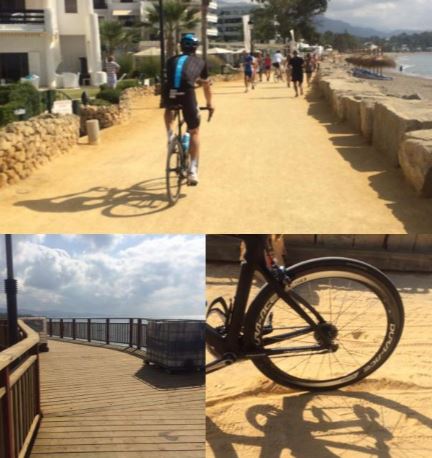
The race mainly stays in the north-west corner of Spain to cut down on transfers but does dip in to France for a stage on the Col d'Aubisque. It finishes on Sunday the 10th September with a stage for the sprinters in Madrid. It is the 71st running of the race and will cover 3,277kms over the three weeks, that's 100km less than last year's route. The organisers have packed lots of short stages in to raise the entertainment and lots of climbing on short, but brutal finishes. There is only one stage over 200kms, but the final climbing day, the day after the individual TT in Calp is 193kms long, over five hard climbs, including the 21km, Special Category finish on Alto de Aitana.
The route has a ridiculously difficult opening half to it with the first sumit finish of the race coming as early as stage 3, but things really get serious from stage 8 with four ridiculously hard summit finish stages in a row, including finishes on the Lagos de Cavadonga and the Pena Cabarga.
3D video of the race route:
It's going to be hard to match the drama of last year's race, with a farcical opening team time trial, neutralised because of the dangerous conditions kicking of a wild and wonderfully exciting three weeks. We had Esteban Chaves landing my biggest odds pick to date at 200/1 on stage 2, but behind, Tom Dumoulin was setting his stall out early with a brilliant ride up a steep climb to take 2nd. Not so good from Nibali though as he took the stickiest of sticky bottles to fly up the climb after a mechanical and was duly kicked out of the race.
And the drama continued - the lead changed hands nine times in total to five different riders over the course of the three weeks. Chaves won a second stage, Sagan was taken out of it by a motorbike and abandoned after only stage 8 and Danny Van Poppel and Caleb Ewan took fine sprint stage wins. Frank Schleck rolled back the years to land a 1-2 for me on Stage 16 (Schleck at 66/1 and Torres at 33/1) and Ruben Plaza topped off a good final week with a solo victory for us at 66/1 on stage 20.
Tom Dumoulin fought and battled bravely, and almost pulled it off, but he was assaulted and battered by Astana on the final day and finally cracked. It was a tactical masterpiece by Astana and Aru, executed to perfection, but such was Dumoulin's bad final day, he not only lost first place, but slipped down to 6th place overall in the GC. Joaquim Rodriguez also rolled back the years to take a stage win, second overall in the GC and also the points jersey prize.
The Route
Stage 1 opens the race with a team trial which will put someone in the first red jersey, and it's likely we'll see Sky, BMC, Astana and Movistar fighting it out for the honour. The first stage starts on the 20th of August at 6:26pm, from the Laias Health Resort, in the heart of the Thermal Province of Ourense. The 22 teams will start at 4-minute intervals and will cover a distance of 27.8km until they reach the Castrelo do Miño Nautical Park where the finish-line is located. The last group is expected to cross it around 8:18pm local time.
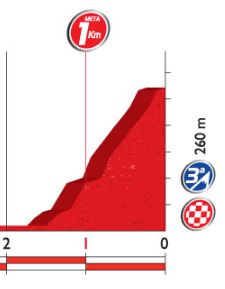
Stage 4 sees them climb to another summit finish on the cliff-top finish at San Andrés de Teixido, the last 3.5kms of which average 8.6%. Stage 5 is pretty straightforward, a relativley flat day with a Cat 3 climb right in the middle, but should end in an uphill sprint finish.
Stage 6 is a lumpy day with six hills to get over, but only one is categorised, and may end in a sprint finish of some sort, but I think this could well be a stage for a breakaway winner. Stage 7 is another possible stage for the breakaway, with three Cat 3 climbs, and there is also the possibility of a late attack off the final climb as the summit comes just 18kms from the finish.
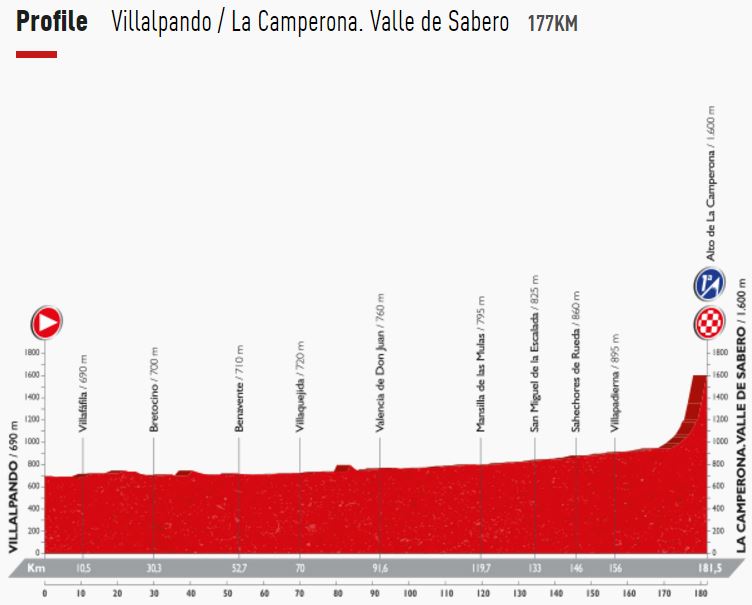
Stage 9 will be a spectacular, tough Sunday special, bringing the first part of the race to an end. Four Cat 3 climbs in 40kms before they hit the final ascension up to the Alto de Naranco. It's not the toughest climb in the world but it does average 6.1% for 5.7kms, with a section in the middle at over 10%.
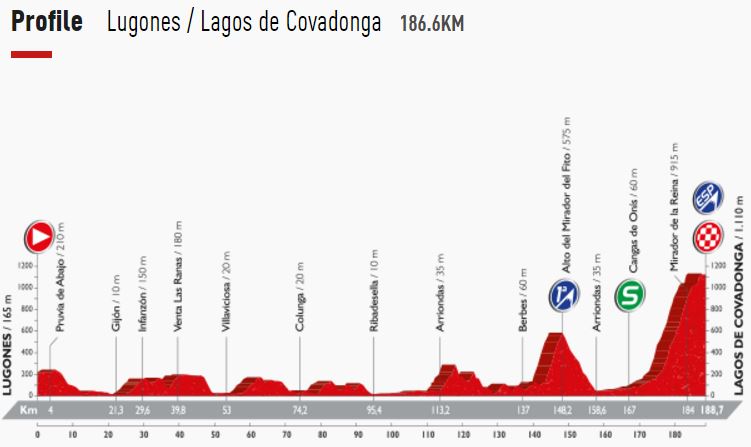
The Cavadonga was last used two years ago when Niemiec held off Contador and Valverde and is a really hard climb with many parts around 10%.
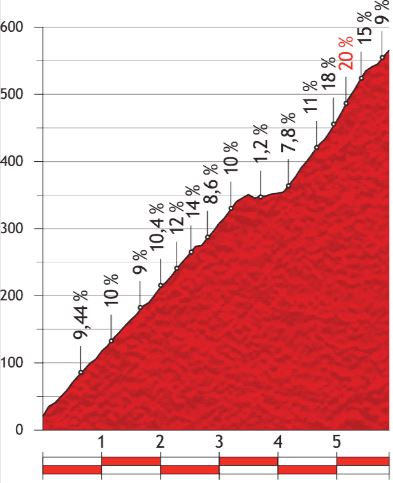
It's only 6kms, but it averages 9.8%, with the last 2kms being particularly brutal, averaging closer to 12%, with parts as steep as 20%. The Peña Cabarga climb last featured in the Vuelta a Espana in 2013, when Vasil Kiryienka won after a solo attack, but it also featured in 2011 with Chris Froome taking the stage win ahead of Juan José Cobo.
Stage 12 is a lumpy stage with a Cat 3, two Cat 2s and a Cat 1 climb along the way, but the last climb comes 10kms from the finish so it could end in a reduced bunch sprint. Stage 13 is the longest stage of the Vuelta at 213kms and dips in to France twice, but finishes in Urdax-Dantxarinea in Spain, in what could be a stage for the break, or more likely one for the sprinters, those that have survived the four Cat 3 climbs along the way.
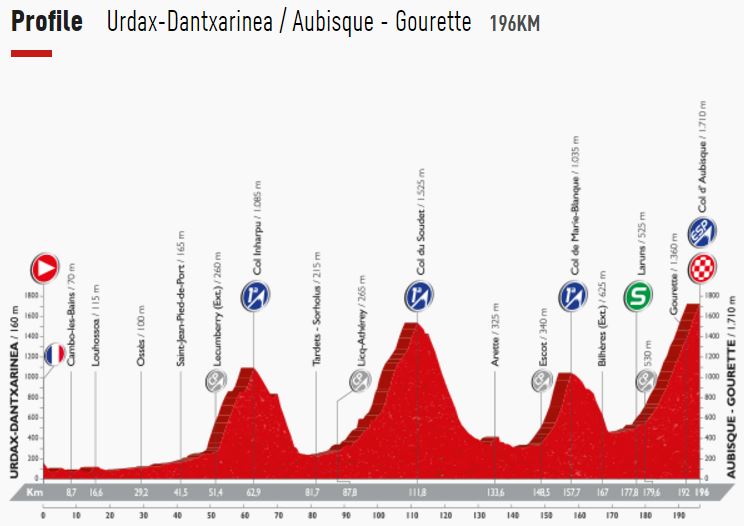
Stage 15 is the shortest stage in the race, and one of the shortest stages you'll see in any race at just 118kms, but it should be a fascinating stage with the finish on the Cat 1 climb of the Aramon Formigal.
Stage 16 should be one for the sprinters, unless they cock it up on the way to Peniscola, and stage 17 sees them take on yet another summit finish with the brutally hard Alto Mas de la Costa, which is only 4kms long, but averages over 11% and hits slopes of 18,19,20 and 21% over the closing kilometres, with the final pull to the line at 16%. Stage 18 is supposedly a 'flat stage' but it's anything but, although it will probably end in a sprint finish in Gandia.
Stage 19 could be one of the most crucial, the flat, 37km time trial from Xabia to Calp, and it is followed by another beast of a mountain stage with Stage 20 that takes them over four Cat 2 climbs and an Especiale climb of the Alto de Aitana. The Vuelta may well be won on the final slopes of the final climb, we could see a similar finish to last year's race. And of course, we get the final sprint stage to Madrid on Stage 21, won last year by John Degenkolb from Danny Van Poppel.
The Favourites
What a line up we have for this race too this year - Tour de France champion Chris Froome will be looking to do better than last year when he crashed and fractured his foot on stage 11, bringing his season to an end. Nairo Quintana looks to make amends for a sub-par Tour de France, if you could call coming 2nd in the Tour sub-par.. He apparently was suffering from allergies and illnesses at the crucial earlier stages, but hopefully he arrives here fit and well and full recovered from the Tour's exertions to challenge, ably assisted by Alejandro Valverde.
Last year's 5th place and dual stage winner, Esteban Chaves, is back to try to get on to the podium, after a brilliant 2nd place in the Giro d'Italia. Alberto Contador will be rested up after only riding eight and a half stages of the Tour de France, he showed the form was still good by winning the Vuelta a Burgos by 1" from Ben Hermans.
Steven Kruijswijk will be looking to make amends after crashing and blowing the lead in the Giro, and Tejay Van Garderen has amends to make also after a poor showing in the Tour. And there are plenty others who can get involved too - Warren Barguil had a tough time in the Tour, Andrew Talansky looks to be riding well this year with 4th in the Tour of California, 5th in the Tour de Suisse and 3rd in the Tour of Utah, it will be interesting to see how he goes in this higher grade field. Darwin Atapuma could well be disputing team leader status at BMC and will like this hilly course, and Miguel Angel Lopez, Robert Gesink and Mikel Landa can also have a say in this race.
Alberto Contador heads the betting at 5/2, but it is really tight between him, Chris Froome (3/1) and Nairo Quintana (4/1), with Chaves at 9/1 and last year's runner-up Joaquim Rodriguez at 12/1.
There's not a lot of opportunities for the sprinters in the race, and as a result it's a pretty sparse selection of sprinters who have decided to head to Spain for the race, but the breakaway riders have plenty of opportunities as we could well see a similar situation to the Giro and the Tour where GC men worry more about the GC times than stage victories.
So ten summit finishes on a course of 3,277kms, three Grand Tour winners at the top of the betting with barely anything to separate them.. It should be an exciting and dramatic three weeks again and I can't wait for it to get started!
A full preview of all the favourites, jerseys and special markets will be available in the days before the Vuelta starts and will be available to subscribers only. Click here to subscribe now!
If you subscribed for my Giro d'Italia previews in time to get the half-price Vuelta offer, drop me an email and I'll give details on how to take up the Vuelta subscription for half price.


